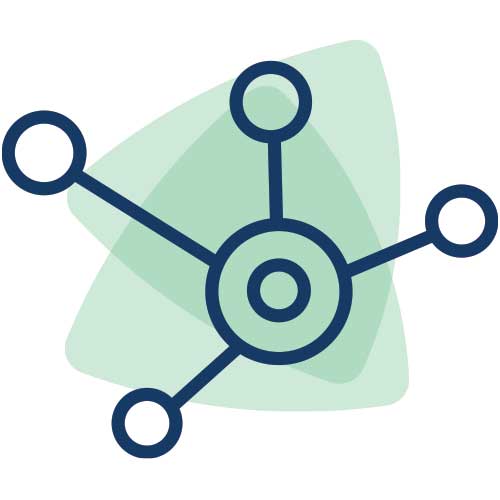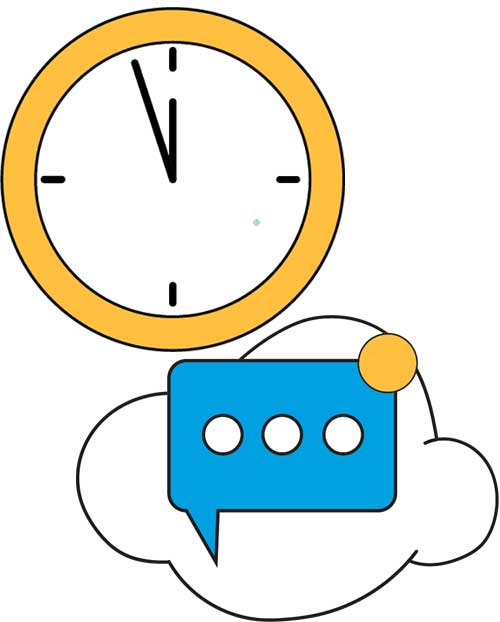Sensory Impairments
Sensory impairments are often complex and everyone’s experiences are unique. Getting a personalised needs assessment can help with support strategies to manage the impact on your work and study. Discover some common questions on sensory impairments.
At Aim Forward we are not medical practitioners, but for over 10+ years we have worked with individuals with sensory impairments, considering how their sensory experiences may be impacting work and learning. We have a specific focus to provide holistic support for people who have conditions that overlap with their sensory issues, such as mental health conditions or neurodivergence.
What is a sensory impairment?
Sensory impairments (or sensory disabilities) are when one or more of our senses do not function as they should.


Our five senses are sight, sound, touch, taste and smell, but most references to sensory impairment are talking about:
- Hearing impairments (including hearing loss and deafness)
- Visual impairments (including vision loss and blindness)
- Dual sensory impairment (where there is some degree of both hearing and vision loss)
Sensory impairment is a term commonly used by medical professionals to refer to a broad category of medical conditions that affect vision and hearing. People with visual or hearing impairments may choose not to use the words sensory impairments, and instead choose to use language that fits them as an individual.
Sensory impairments are experienced differently by different people, and they can take many forms. The needs of people born with sensory impairment can be very different to the needs of people who live for some time with full vision or hearing. The impact of a sensory impairment can range from mild (where difficulties can be masked through the development of coping strategies) to profound (where difficulties can impact all areas of everyday life).
What are the levels of visual impairment?
Not everyone who has a visual impairment is certified as blind. There are different types of visual impairment:
- Sight impaired – where vision is significantly reduced but a person can still detect some degree of colour, shape and detail, and can still gauge the depth of field (how close or far things are)
- Severely sight impaired (also known as blindness) – where vision is reduced to the point where a person may not be able to determine light and darkness, or cannot gauge the depth of field
- Temporary vision loss and sudden blindness – this can be a result of conditions like migraines or glaucoma, but you should always seek urgent medical attention, especially if it has never happened before
- Colour blindness – where a person cannot tell the difference between certain colours, most commonly red and green
- Night blindness (also known as nyctalopia) – where the eyes struggle to adjust to low-light conditions
What are the levels of hearing impairment?
Not everyone who has a hearing impairment is deaf. There are different levels of hearing loss which describe how loud sounds need to be in decibels for people with hearing loss to be able to hear them. People with a ‘normal’ degree of hearing loss have a range up to 20db HL:
- Mild (21 – 40 dB HL)
- Moderate (41 – 70 dB HL)
- Severe (71 – 95 dB HL)
- Profound (95+ dB HL)
People who are considered ‘deaf’ are usually in the profound hearing loss range and often communicate using sign language, whereas people with lesser degrees of hearing loss may still be able to communicate verbally with the help of hearing aids or implants.
How do sensory impairments impact work and learning?
Sensory impairments can have a significant impact on work and learning, either directly (being able to see or hear clearly and consistently) or indirectly (because of fatigue or anxiety). Most people have a basic understanding of how hearing or vision loss impacts work and learning, because people with sensory impairments may have difficulty with or be unable to:
- Read printed or digital text without braille or a screen reader
- Take part in group learning and meetings or make video calls without a hearing aid, British Sign Language (BSL) support or accessibility features like closed captioning or live transcripts
But there are many other ways in which sensory impairments can impact on work and learning however and these can include:
- Fatigue or exhaustion from the additional complexity of completing everyday tasks
- Anxiety from navigating unfamiliar environments, or being unclear who is speaking
- Emotional and psychological impact from possible feelings of isolation, or frustration trying to access social groups that don’t consider accessibility
- Time management challenges, because everyday tasks can take longer, particularly if there are unexpected changes to routines or issues with technology

Information about sensory impairment diagnosis

How is a sensory impairment diagnosed?
The diagnosis of sensory impairment is made by healthcare specialists such as ophthalmologists (for visual impairments) and audiologists (for hearing impairments) using specialist equipment. Sensory impairments can be present at birth or can be acquired later in life. If you have recently started to experience hearing loss, vision loss or both, you must speak to your GP (or call 999 if these symptoms start suddenly).
Are sensory impairments considered disabilities?
Under the UK’s Equality Act 2010, a disability is a “physical or mental health condition that has a ‘substantial’ and ‘long-term’ effect on your ability to do normal daily activities. This can include activities inside and outside your home, including preparing for and getting to work and performing the duties of your job.
If you are certified as blind, severely sight impaired, sight impaired or partially sighted, then you are automatically considered Disabled under the Equality Act 2010.
The law says to ignore the effects of any medication, aids or treatment when considering whether someone has a disability. The exception to this rule is wearing glasses or contact lenses: if wearing glasses or contact lenses means you no longer experience a substantial effect on your ability to do normal, day-to-day activities, then you would not be considered disabled under the Equality Act 2010.
Information about getting support for sensory impairment

What is a needs assessment for sensory impairment?
You may already have reasonable adjustments in place where you work or study through working with your GP and healthcare specialists. However, some people with sensory impairments still feel there are areas of working and learning where they need more support. A needs assessment might help bridge that gap. A needs assessment with Aim Forward can help identify those aspects of living with your sensory impairment that impact your day-to-day life, but may not be as obvious to need accommodation or adjustments.
Aspects like:
- Fatigue or exhaustion from the additional complexity of completing everyday tasks
- Anxiety from navigating unfamiliar environments, or being unclear about who is speaking
- Emotional and psychological impacts from possible feelings of isolation, or frustrations trying to access social groups that don’t consider accessibility
- Time management challenges, because everyday tasks can take longer, particularly if there are unexpected changes to routines or issues with technology
Our one-to-one online needs assessments explore:
- How you currently learn and work
- The reasonable adjustments and assistive technology you already use for your sensory impairment (like screen reading AT software or listening devices)
- Other assistive technology that could be put in place to support you (such as Optical Character Recognition Software (OCR) or captioning software)
During your needs assessment, you will work with your assessor to create personalised strategies that are most likely to work for you. Understanding how you work best and having personalised strategies to support you can have a lasting, positive impact on how you experience life day-to-day and achieving your goals.
What types of support can Aim Forward offer for sensory impairments?
The needs assessment is personalised to you, but it could cover areas like:
- Reading and research – how well can you temporarily hold and manipulate information in your mind to interpret and summarise what you find for work or studying?
- Writing and composition – how well can you plan and structure your writing or presentations?
- Meetings, presentations and note-taking – how easy do you find it to stay focused and keep track of what’s happening in meetings or presentations?
- Time management and organisation – how easy do you find it to plan, switch between tasks and keep track of the time?
- Revision and exam preparation – how well can you hold and retain information for future use, particularly if you lack interest in the subject?
- Environment – how easy do you find starting work or staying focused in cluttered or distracting environments?
- Wellbeing – how does your sensory impairment impact your energy levels, mood and self-esteem?
- Potential reasonable adjustments – what changes to the way you work or learn, like having your tasks prioritised, would help you in your day-to-day activities?
It also explores assistive technologies that might support you day-to-day, like:
- Wellbeing and mental health software or apps – helping maintain structure or routine in a busy daily schedule
- Text-to-speech software – hearing written content read aloud can help process and retain information
- Speech-to-text software – letting your ideas flow into words on a page, without worrying about typing or spelling
- Mind mapping software – capturing your ideas quickly, while the software structures documents for you in programmes like Word or PowerPoint to avoid procrastination
- Spell-checking software – less time worrying about red lines and more time on content with sophisticated spell-checks
- Grammar checkers – focusing on your content, while the software ensures consistency and professionalism in the text
- Note-taking software and apps – reducing the impact of vision and hearing difficulties in meetings with automatic note-taking
How much does a needs assessment cost?
A needs assessment with one of our assessors costs £600 (including VAT). This cost includes your personalised report. Your report will highlight personalised strategies for working and learning your way, as well as any assistive technology recommendations your assessor has discussed with you in the assessment. You can book your assessment by clicking here.
What are the benefits of a needs assessment for sensory impairments?
Understanding how you work best and having personalised strategies to support you can have a lasting, positive impact on how you experience life day-to-day and achieve your goals. Our one-to-one online needs assessments aim to understand how you currently learn and work, then create personalised strategies and recommend assistive technologies that will help you excel.
For over 10+ years we have seen needs assessments transform the way people with sensory impairments can excel in their studies, work and everyday life, and clients have reported increased:
- Wellbeing
- Productivity
- Career opportunities
- Grades
Our needs assessors hold a variety of disability-specific qualifications, alongside decades of experience working with physical health conditions, mental health conditions and other disabilities including lived experience. This puts us in a unique position to provide needs assessments that recognise co-occurring conditions (where you experience more than one condition at the same time). Over 20% of our needs assessment clients have two or more formally diagnosed conditions, but many more experience undiagnosed traits or symptoms. For example, you may have a diagnosis of a sensory impairment, but also be experiencing symptoms of anxiety and depression. Our needs assessments focus solely on you and your unique needs.
We have used lots of assistive technology previously, but it was so refreshing to understand what else can help my daughter for both her visual impairment and anxiety. I hadn’t fully understood how much one impacts the other for her. The assessor was very kind, knowledgeable about both conditions and how to help implement exciting new solutions for her studies.
